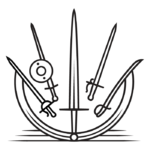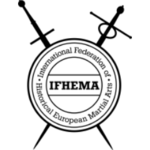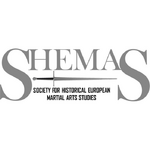|
|
You are not currently logged in. Are you accessing the unsecure (http) portal? Click here to switch to the secure portal. |
Difference between revisions of "Main Page"
| (36 intermediate revisions by 2 users not shown) | |||
| Line 1: | Line 1: | ||
| − | + | <!-------------------------------------------- | |
| − | | style=" | + | WELCOME |
| − | | style="width: | + | ---------------------------------------------> |
| − | | style="font-size:90%; line-height: | + | <div style="background:#f9f9f9; border:1px solid #ddd; -moz-box-shadow: 0 1px 3px rgba(0, 0, 0, 0.35); -webkit-box-shadow: 0 1px 3px rgba(0, 0, 0, 0.35); box-shadow: 0 1px 3px rgba(0, 0, 0, 0.35); -moz-border-radius: 7px; -webkit-border-radius: 7px; border-radius: 7px; background: -moz-linear-gradient(top, #fff 75%, #f9f9f9 100%); background: -webkit-gradient(linear, left top, left bottom, color-stop(75%,#fff), color-stop(100%,#f9f9f9)); background: -webkit-linear-gradient(top, #fff 75%,#f9f9f9 100%); background: -o-linear-gradient(top, #fff 75%,#f9f9f9 100%); background: -ms-linear-gradient(top, #fff 75%,#f9f9f9 100%); background: linear-gradient(top, #fff 75%,#fff 100%); height:auto; padding-left:10px; padding-right:10px; padding-bottom:5px; padding-top:5px; margin-left:auto; margin-right:auto; margin-bottom:6px; width:90%; min-width:50em;"> |
| + | {| style="margin-bottom:.2em; width:100%;" | ||
| + | | style="width:51%; text-align:center;" | <h1 style="padding:0.2em; margin: 0 0 0.2em 0; color:#343A47; font-size:225%;">Welcome to the Wiktenauer!</h1>The free library of [[Historical European Martial Arts]] books and manuscripts | ||
| + | | style="width: 7%;" | | ||
| + | | style="width:42%; font-size:90%; line-height:150%;" | | ||
| + | <div style="float:center; margin:0 auto 0 auto;"> | ||
| + | ''Without books no one can be a good teacher nor even a good student of this art.''<br/ style="margin-bottom:0.5em;"><span style="margin-left:1em;">~ Master [[Fiore de'i Liberi|Fiore Furlano de’i Liberi]], ca. 1405</span> | ||
| + | </div> | ||
|} | |} | ||
| − | + | </div> | |
| − | + | <div style="margin:0 auto 0 auto; padding:1em; clear:both; width:90%; min-width:50em;"> | |
| − | + | {{Wiktenauer:About}} | |
| − | + | </div> | |
| − | + | <!-------------------------------------------- | |
| − | + | FIRST COLUMN | |
| − | + | ---------------------------------------------> | |
| − | + | <div style="box-sizing:border-box; float:left; width:50%; min-width:26.25em; padding:0 5px 0 5px;"> | |
| − | + | {{Main Page/Frame | |
| − | + | | color = 3b5998 | |
| − | + | | title = Announcements | |
| − | { | + | | content = {{#lst:Wiktenauer:Blog|current}} |
| − | |||
| − | |||
| − | |||
| − | |||
| − | |||
| − | |||
| − | |||
| − | |||
| − | |||
| − | |||
| − | |||
| − | < | ||
| − | |||
| − | |||
| − | |||
| − | |||
| − | |||
| − | |||
| − | |||
| − | {{ | ||
| − | | | ||
| − | | | ||
| − | | | ||
| − | |||
| − | |||
| − | |||
| − | |||
| − | |||
| − | |||
| − | |||
| − | |||
| − | |||
| − | |||
| − | |||
| − | |||
| − | |||
| − | |||
| − | |||
| − | |||
| − | |||
| − | |||
| − | |||
| − | |||
| − | |||
| − | | | ||
| − | |||
| − | |||
| − | |||
| − | |||
| − | |||
| − | |||
| − | |||
| − | |||
| − | |||
}} | }} | ||
| − | + | </div> | |
| − | + | <!-------------------------------------------- | |
| − | + | SECOND COLUMN | |
| − | + | ---------------------------------------------> | |
| − | + | <div style="box-sizing:border-box; float:left; width:50%; min-width:26.25em; padding:0 5px 0 5px;"> | |
| − | + | {{Main Page/Frame | |
| − | + | | color = d14836 | |
| − | + | | title = Featured article | |
| − | + | | content = {{Wiktenauer:Main page/Featured}} | |
| − | {{ | ||
| − | | | ||
| − | | | ||
| − | |||
| − | | | ||
| − | |||
| − | |||
| − | |||
| − | |||
| − | |||
| − | |||
| − | |||
}} | }} | ||
| − | + | </div> | |
| − | + | <!-------------------------------------------- | |
| − | + | FOOTER | |
| − | + | ---------------------------------------------> | |
| − | + | <h2 style="padding:0.2em 0.5em; font-size:150%; font-family:sans-serif;">Global HEMA organizations</h2> | |
| − | |||
| − | |||
| − | |||
| − | |||
| − | |||
| − | |||
| − | |||
| − | |||
| − | |||
| − | |||
| − | |||
| − | |||
| − | |||
| − | |||
| − | |||
| − | |||
| − | |||
| − | |||
| − | |||
| − | |||
| − | |||
| − | |||
| − | |||
| − | |||
| − | |||
| − | |||
| − | |||
| − | <h2 style="padding:0.2em 0.5em;"> | ||
| − | {{:Main page/Wiktenauer parents}} | + | {{Wiktenauer:Main page/Wiktenauer parents}} |
| − | <h2 style=" | + | <!-- <h2 style="padding:0.2em 0.5em; font-size:150%; font-family:sans-serif;">Wiktenauer sponsors</h2> |
| − | <div style="clear:both | + | <div style="clear:both;">{{Wiktenauer:Main page/Wiktenauer sponsors}}</div>--> |
__NOTITLE__ __NOEDITSECTION__ __NOTOC__ | __NOTITLE__ __NOEDITSECTION__ __NOTOC__ | ||
Latest revision as of 22:08, 18 February 2025
Welcome to the Wiktenauer!The free library of Historical European Martial Arts books and manuscripts |
Without books no one can be a good teacher nor even a good student of this art. |
Dedicated to the memory of Dr. Patri Pugliese
Wiktenauer is an ongoing collaboration among scholars and practitioners from across the Western martial arts (WMA) community, seeking to collect all of the primary source materials that makes up the text of historical European martial arts (HEMA) research and to organize and present it in a rigorous but accessible format. The Wiktenauer project started in 2009, later moving under the umbrella of the 501(c)(3) HEMA Alliance, and is named for Johannes Liechtenauer, grand master of the best-documented tradition of the early Modern era, the subject of many dozens of manuscripts and books over a period of nearly three centuries.
Wiktenauer's data model is built on separating the contents of each master's teachings from the books and manuscripts that contain them. For this reason, there are two main types of pages:
Treatise Pages host all relevant data on an individual book or manuscript, including codicological description, provenance (for manuscripts) or publication history (for books), table of contents (with links to the appropriate master pages), gallery of page scans, and bibliography of print resources. The exemplar for manuscripts is the Goliath Fechtbuch, while the exemplar for printed books is Ergrundung Ritterlicher Kunst der Fechterey. With well over a thousand individual books and manuscripts to research, building out this index will take a long time. Ultimately, every text in the corpus of Historical European Martial Arts literature will have a dedicated page.
Master Pages display the actual transcription and translation of a given master's complete works, as well as bibliographical information when available. In cases of multiple copies of a master's work, the transcriptions are laid out side-by-side to facilitate cross-comparison and creating the most accurate translation possible. To aid in interpretation, the writings are also illustrated with pictures from the masters' work (when available). A bibliography at the end of each page lists additional transcriptions, translations, and scans that are available in print. The exemplar for this category of pages is Fiore de'i Liberi. Ultimately, every master in all of the traditions of Western Martial Arts will have a dedicated page. (Anonymous texts are displayed on 'orphan treatise' pages, which are structured like master pages but without the biography.)
The Wiktenauer index is currently considered complete up to the end of the 16th century, and we're currently working on adding material from the 17th (while also trying to keep the existing pages up to date with the latest discoveries and published research).
If you'd like to pitch in, simply request an account and consult How can I help?
11th May 2022 would mark the 72nd birthday of Dr. Patri Pugliese, the most important person in the history of modern HEMA that you've never heard of. I will go so far as to say that there is no one in this world who contributed more to the spread and development of the HEMA movement, and especially of HEMA in America, than did Patri.
For himself, he was a passionate student of both historical combat (not just fencing, but also drill with pike and musket) and historical dance, and founded or participated in groups dedicated to those activities around New England. Most recognizably to readers today, he co-founded the Higgins Armory Sword Guild, which not only provided online resources and public classes and demonstrations for over a decade, but also supported his friend and fellow instructor Dr. Jeffrey Forgeng in his translation and interpretation efforts (leading to his publication of MS Ⅰ.33, Joachim Meyer, and others).
But Patri's more profound legacy is fencing manuals. Throughout the '90s and continuing until his death, he distributed a staggering catalog of fencing treatises. This was before (and while) the consumer computing revolution changed everything—he was physically mailing sheaves of paper, loose or stapled together. Some were fencing manuals that he photocopied at local research libraries, others were printed from microfilm ordered from museums. He was the first person in the community to do this, and he charged only the cost of printing and postage (or at most a slight premium to recoup the initial purchase).
Of this, he simply wrote "I regard myself as a student of the sword rather than a publisher, and am making these manuals available to support research in this area. It would, of course, be selfish and inconsistent with the honorable traditions associated with fencing to do otherwise."
I will include a partial list of Patri's catalog below. As the internet became more established, most of these were scanned and placed online (with his blessing—he was happy to increase their accessibility). If you ever accessed black and white scans of any of these texts from sites like Bill Wilson's homepage, the ARMA site, the Raymond J. Lord Collection, or the Higgins Sword Guild, then you have likely benefited from Patri's work. Wiktenauer itself could not have grown so quickly or easily without these scans, some of which we still use.
I often joke that Wiktenauer's patron saint is Paulus Hector Mair, the shady 16th century Augsburg patrician who embezzled public funds to cover the cost of collecting fencing manuals and throwing lavish parties.
It is Patri, however, who embodied our highest aspirations of disseminating knowledge and resources as widely and freely as possible, and thereby pushing the bounds of our understanding of historical fencing traditions.
Patri Pugliese died in 2007, fifteen years ago. One of my greatest HEMA regrets is that even though I spent considerable time in Massachusetts during the years between 2001, when I started, and his death, I never crossed paths with him.
Fifteen years is an eternity in the world of HEMA. It is enough time that his name is no longer familiar to most teachers and students of historical fencing, but if anyone of us deserves to be remembered, he does.
So raise a glass to Patri, my friends. He was a pioneer, not just of the study of fencing, but of the sharing of it. The edifice of knowledge that we have constructed in HEMA today was built on the materials he offered us, freely.
And then tell your students about this man to whom we all owe a great debt.
Michael Chidester (Contact)
Wiktenauer Director
11 May 2022
| Pseudo Ibn Akḥī Ḥizām | |
|---|---|
| Born | 10th AH/15th CE century Egypt? Syria? |
| Occupation | Mamluk scribe? |
| Nationality | Circassian Period (“Burjī”) Mamluk |
| Influences |
|
| Genres | Military manual |
| Language | Arabic, Egyptian Colloquial Arabic |
| Manuscript(s) | MS Arabe 2824 (1470) |
Kitāb al-makhzūn: Jāmiʿ al-funūn ("The Treasure: A Work that Gathers Together Combative Arts"; colophon dated 875 AH/1470-1CE) is an Arabic language work in the classical style of Mamluk furūsīya literature. The work is attributed to the famous «father» of Islamicate martial arts literature Ibn Akhī Ḥizām (c. 250 AH/ 864 CE; given as Ibn Akhī Khuzām), yet is clearly the work of a Mamluk author. Agnès Carayon suggests that a grandee of the Circassian Mamluk (Burjī) court commissioned the work, potentially for Sultan Qāʾitbay (r. 1468-1496). Composite in nature, the work is most likely a summary of other, more voluminous works—such as Nihāyat al-suʾl wa-l-amnīya fī taʿlīm aʿmāl al-furūsīya ("The End of Questioning: A Trustworthy Work concerning Instruction in the Deeds of Furūsīya") by Al-Aqsarāʾī (c. 9th cent. AH/14th cent CE). Certain sections begin and then trail off, while others remain incomplete, suggesting that this work is composite in nature and was most likely a summary or copy of other works both extant and lost. The author does not cite other authors within the body of the text itself.
The text of Jāmiʿ al-funūn is by and large more classical in nature with a great deal of dialectal, Egyptian Arabic of the period. This pertains both to vocabulary (ex: bāṭ for ibāṭ "armpit" throughout; jawwān as a preposition) as well as to grammar (verbs not in gender alignment, plurality disagreements, grammatical inconsistencies of adverbial phrases etc.). An introductory phrase in Ottoman Turkish in the beginning of the text has it that on «The seventh night of Muharram, 975 AH (1567CE)” a certain “Ṣilāhdār Aǧa” Dervish (unknown) petitioned God to be among those counted as Muhammad’s companions. Likewise, the intricate title page has “The owner of this work is Derviş Ağa” crossed out in black ink. Whether or not this was a higher ranking “Arms-Bearer” of the Sultan cannot be confirmed. The version from which the following translation stems is Bibliothèque Nationale MS 2824 (another version can be found in the same collection: MS 2826). Scholars have yet to produce a critical edition of this work.
Despite its brevity in comparison to other works of the Mamluk furūsīya tradition, Jāmiʿ al-funūn provides a great deal of insight into the ways in which the Mamluks trained their troops. The illustrations featured in the work are some of the best examples of the medium. Distinct from other works in the genre with lengthy introductions, Jāmiʿ al-funūn begins with only minor benedictions, then jumps straight into a description of how to establish the training area for cavalry exercises – the nāwārd. From there, the author displays 72 bunūd or paired lance exercises – most likely inspired by al-Ṭarāblūsī’s famous 72 forms (c . 738 AH / 1337-8 CE). Following this, the author then treats issues deemed relevant to the development of a cavalier, without a particular logic to the ordering of the sections.
Unlike other works of furūsīya, Jāmiʿ al-funūn contains several sections detailing the ways in which soldiers can train for combat on foot. Most notably, the author presents a system for training swordsmanship. The work begins with instruction on the ways in which one can execute paired exercises with cane fighting, dagger fighting, and cane and shield fighting on foot. The author details the proper ways to feint and hit, the ways in which one can parry and riposte (and disarm), and where to target with a sword. In the author’s system, training with the cane was a safe means to perfect one’s technique before moving on to using sharp swords in battle. After training with the cane, the author recommends perfecting test cutting on clay mounds as a way to develop arm strength and ensure proper edge alignment. Following both of these methods of training, a potential cavalier would be ready to pursue test cutting on horseback.
(Read more…)
- Recently Featured:
- Andre Paurenfeyndt – Federico Ghisliero – Alfonso Fallopia – Hugold Behr – Angelo Viggiani
Global HEMA organizations
| Historical European Martial Arts (HEMA) Alliance
Wiktenauer's parent, a US educational non-profit which provides a range of programs and services for its members and affiliate schools and clubs, as well as serving the wider HEMA community. |
| International Federation of Historical European Martial Arts (IFHEMA)
An umbrella organization of national HEMA federations which facilitates international cooperation between members and protects the identity of HEMA as a combat sport on the international stage. |
| Society for Historical European Martial Arts Study (SHEMAS)
A learned society promoting and supporting research in Historical European Martial Arts Studies. It involves researchers and practitioners alike. (Currently innactive.) |



